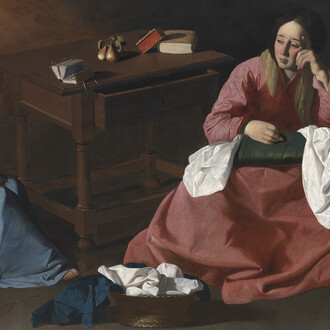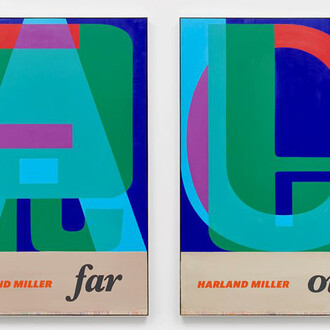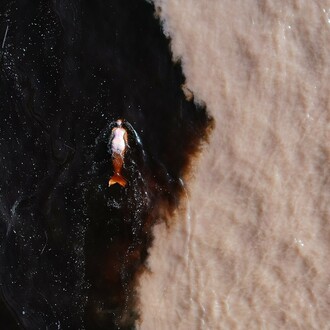WOOD is a themed sculpture exhibition at Rosenfeld Porcini including works by Roberto Almagno (Italy); Leonardo Drew (USA); Herbert Golser (Austria); and Sebastián Gordín (Argentina). The gallery will showcase new sculptures by each artist who all sculpt with wood, yet use the medium in diverse ways, both technically and from a narrative point of view.
Finding his inspiration within the urban environment, sculptor Leonardo Drew collects the relics of existence, both in nature and in our industrial world. Although he transforms these raw materials, they always retain their original identity as his art relates to the cycle of life – birth, death and rebirth. His materials are born in the world and either die or are merely discarded, before being found by the artist, given due burial within his studio, and then transformed into a new life reborn within his sculptures.
Material speaks to you. It tells you to be collected, for instance. A block of material you are working on tells you what to do with another congregate you are distant from – as you say. Is also material telling you when to stop, when your production is finished and your work is ready to be exposed?
As an artist, I would say that there is generally a moment when you feel you have completed a form. The materials do facilitate that feeling, but so does your instinct. There have been works that I have kept for a long time because I never had that moment of realization. These works are often de-constructed or destroyed to create new ones.
Are you re-composing something through all those pieces of material?
Yes, I am constantly re-working pieces in my studio. This process has been rather astutely referred to as “material cannibalism,” by Valerie Cassel Oliver - a term which I love. If a piece is with me long enough, I start to deconstruct its elements in my mind, and these components often become the corner stones for new works.
“There is the artwork that you physically make but there’s also the journey that happens on the inside” you say. If you could speak to Leonardo at the very beginning of this journey of yours, what would you instruct him to stay away from?
I would say to listen, to follow your instincts and to be open to new experiences.
In 1989, I had an exhibition at the Kenkelelaba Gallery in New York and it caused a big stir in my career. It was significant because it involved the concept of what art was.
The work included dead animal parts and ropes. For the audience, digesting it was a real test of what art was for them. It’s not that I had to or needed to ask those questions because I am an artist and I know what I am creating is art.
But when it comes to exhibiting that kind of work, the questions that it elicited from viewers… I found it to be very interesting in my development as an artist and as a human being.
Contemporary artists prefer beauty not to be an item, not one of too much importance anyway. How is beauty perceived, and treated, by you?
The viewer perceives beauty. I am concerned with what the viewer sees and discovers when they engage with my work. My work should operate as a mirror. The viewer should be able to realize some aspect of themselves in front of my work. It is not important for the viewer to see my realizations or meaning behind each piece.
Do you see 3-d printing as a possible integration of your work-system?
No.
When do you feel you become an artist?
In the studio, which is where I generally am.
What artists inspire you?
It’s hard to name them all. I’m constantly being introduced to new work by artists from all over the world, especially during my travels.
To name a few, I was initially drawn into abstraction by looking at Jackson Pollock’s drip paintings early in my career. I have also always been fascinated by and been very inspired by Piet Mondrian’s grid structures. I would also say that I greatly admire Richard Serra, Anselm Kiefer and Christian Boltanski.
Giant scale seems to suit you: do you plan the proportions of your work?
Generally, I work within a grid or framework, and these range in size and fields. Depending on the intended space or site for a piece, the materials I’m working with, etc.
What is the core of Leonardo Drew and how has it changed since Number 8 (note: the piece where the artist put scavenged dead birds and animals he found on the streets, all painted black, a very physical piece)?
I would say that is ever shifting but still within the parameters of what I’ve seen and what I’ve done while living on this planet. I’m always learning and searching for answers, not only in my artistic practice, but also in life.
The best way to experience the work is to view it. To complete my work, the viewer and the artist should be complicit in its meaning. There should be an intimate exchange between the two.
The work operates by itself. I number the works for a reason and don’t use titles. The work should stand-alone and offer a unique perspective to each person.
Is what you are today what you wanted for yourself, as an artist and a man?
I would say so, but I’d like to be remembered as someone that made an attempt to stay in touch with what is real, but also understanding that within ourselves we are part of a larger aspect that encompasses the cosmic and beyond.
WOOD will be at Rosenfeld Porcini Gallery from 28 November 2014 - 31 January 2015.



















